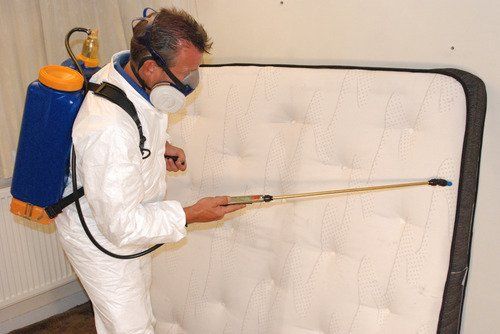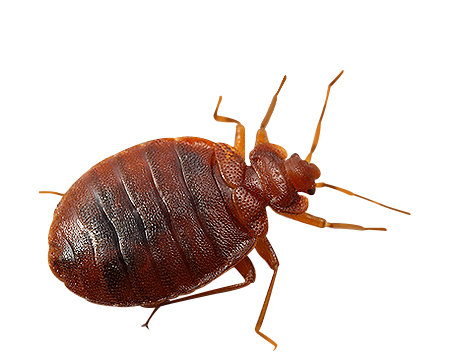Get Educated About the Kinds Of Insect Control Techniques and Their Benefits for Property Owners
Understanding the various parasite control approaches offered to homeowners is crucial for reliable bug monitoring. House owners who are knowledgeable can make critical options that not only address bug problems yet also enhance the overall high quality of their living setting.
Chemical Insect Control Techniques
Chemical insect control techniques are an essential element of incorporated insect management strategies for homeowners seeking effective services to pest invasions. These methods entail the application of chemical substances created to eliminate or hinder pests that intimidate individual residential or commercial property, wellness, and comfort. Typical chemicals made use of include pesticides, fungicides, rodenticides, and herbicides, each tailored to target certain parasites.
The main advantage of chemical bug control is its quick performance; lots of formulations provide prompt outcomes, decreasing pest populaces significantly quickly. In addition, developments in chemical formulations have resulted in items that are extra eco-friendly and have reduced poisoning degrees for non-target organisms when used correctly.

Organic Pest Control Methods
Natural bug control approaches have actually gotten importance as home owners seek more secure and more lasting choices to traditional chemical techniques. Biological parasite control methods use natural predators, parasites, or microorganisms to take care of parasite populaces efficiently. This technique is not only eco-friendly but additionally decreases the risk of harm to non-target types, including beneficial bugs and wild animals.
One of the most typical biological control methods entails introducing natural predators into the atmosphere. For example, ladybugs can be used to manage aphid populations, while nematodes target soil-dwelling parasites like grubs. Additionally, parasitoids-- microorganisms that survive on or within a host-- can be utilized to manage particular pest varieties by laying eggs inside them, inevitably resulting in their death.
One more strategy is making use of biopesticides, which are acquired from all-natural products such as plants, germs, or minerals (bed bug exterminator). These items can properly target insects while posturing marginal danger to family pets and people. In general, biological insect control methods supply homeowners with a reliable methods of pest monitoring that straightens with eco-friendly principles, promoting a much healthier living setting while decreasing dependence on synthetic chemicals
Mechanical Parasite Control Strategies
Mechanical insect control strategies include a variety of approaches that physically stop or get rid of parasites without the use of chemicals. These methods are particularly helpful for property owners looking for eco-friendly alternatives while making sure the security of their living rooms.
One usual approach is the usage of obstacles, such as internet, catches, and screens, which stop pests from getting in homes or details locations. Setting up window displays can efficiently maintain bugs out, while utilizing physical obstacles around gardens can discourage bigger bugs like deer or bunnies. Furthermore, mechanical traps developed for rats can capture and eliminate these bugs without the demand for poisonous compounds.
Another efficient technique includes the use of vacuums and mops to remove pests straight from surface areas. Regular cleaning and upkeep can considerably lower bug populations by removing food sources and concealing places. Employing tools like ultrasonic parasite repellents can discourage various bugs through audio waves that are undesirable to them but faint to humans.
Cultural Parasite Control Practices
Social parasite control methods focus on modifying the atmosphere and monitoring methods to produce problems that are much less for pest infestations. These methods are basic in keeping a balanced ecosystem and decreasing the dependence on chemical interventions. By changing agricultural techniques, homeowners can efficiently hinder insects while promoting plant health.
One usual technique includes crop turning, which disrupts the life process of pests by changing the sorts of plants expanded in a particular area (bed bug exterminator). This not just lessens pest populaces however likewise improves dirt health and wellness. In addition, intercropping-- planting varied plants in closeness-- can puzzle parasites and lower their ability to situate their preferred websites host plants
Water monitoring is an additional crucial element of social techniques. Appropriate watering techniques can prevent standing water, which acts as a breeding place for mosquitoes and various other insects. Maintaining tidiness in and around the home, such as on a regular basis eliminating particles and food waste, can significantly lower parasite attraction.
Integrating these cultural methods into a detailed bug monitoring technique enables home owners to develop a setting that normally deters bugs, therefore boosting the performance of other control methods while advertising lasting gardening and landscaping.

Integrated Parasite Administration Approaches
Integrated Bug Management (IPM) stands for an alternative method that site web incorporates different methods to efficiently manage parasite populaces while decreasing environmental impact. This methodology integrates organic, cultural, physical, and chemical methods to attain sustainable pest control. By examining pest populaces and their natural enemies, IPM highlights surveillance and determining pests before implementing control actions.
One of the core concepts of IPM is making use of limits, which establish the level of pest task that warrants treatment. This makes certain that therapies are used only when essential, reducing the dependence on chemical pesticides. Organic control approaches, such as introducing natural killers or bloodsuckers, operate in combination with cultural practices like crop turning and habitat adjustment to interfere with pest life process.
In addition, IPM urges making use of least-toxic chemical choices when treatment is needed, focusing on items that position very little threat to non-target organisms and the atmosphere. For home owners, adopting IPM comes close to not only enhances the efficiency of insect management yet additionally promotes a healthier living atmosphere, cultivating biodiversity and decreasing chemical exposure. Eventually, pest control people IPM empowers property owners to make educated decisions that balance bug control with environmental duty.
Final Thought
In final thought, recognizing the different insect control techniques encourages property owners to make informed choices regarding pest management. Each strategy-- chemical, organic, mechanical, cultural, and incorporated parasite administration-- provides distinctive advantages that cater to various demands and preferences.
Recognizing the different bug control techniques available to house owners is necessary for efficient pest administration.Chemical parasite control techniques are a critical element of incorporated insect management techniques for home owners looking for reliable services to pest infestations. On the whole, biological insect control strategies supply home owners with an efficient methods of parasite monitoring that lines up with environmental principles, advertising a much healthier living environment while reducing reliance on synthetic chemicals.
Social bug control techniques focus on customizing the environment and administration strategies to produce problems that are less conducive to pest infestations.In conclusion, understanding the various pest control techniques encourages property owners to make enlightened decisions concerning pest management.